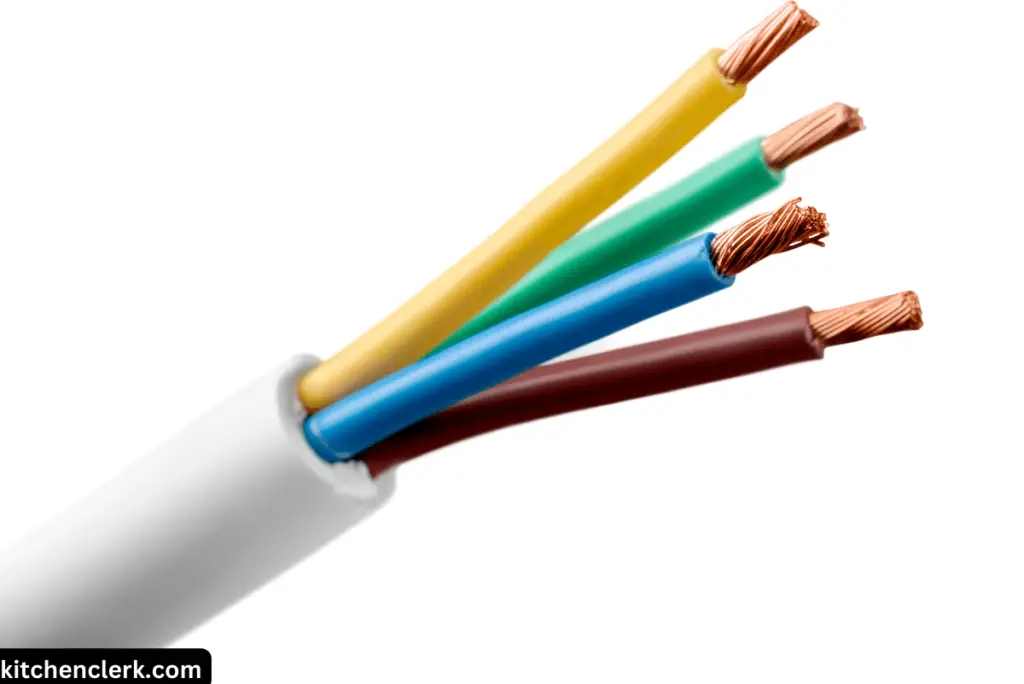Are you in the process of installing a new cooker or upgrading your existing one? One crucial aspect to consider is the cable size for your cooker. Choosing the right cable size is not only vital for the efficient operation of your appliance but also for safety purposes.
I understand the importance of selecting the appropriate cable size to minimize the risk of electrical hazards and ensure optimal performance. In this comprehensive guide, I will walk you through the process of determining the correct cable size for your cooker, taking into account factors such as power rating, cable capacity, and installation requirements.
Calculating Cable Capacity

You need to calculate the cable capacity to ensure that your cooker is supplied with the appropriate amount of electrical power. Cable capacity refers to the amount of electrical current that can flow through the cable without exceeding its maximum temperature rating. Exceeding the cable’s capacity can lead to overheating and potential fire hazards.
To calculate the cable capacity, you will need to consider several factors:
1. Voltage
The first factor to consider is the voltage of your cooker. In most residential settings, cookers operate on a standard voltage of 230 volts (V). However, it’s always a good idea to double-check the voltage requirements specified by the manufacturer.
2. Current rating
The next step is to determine the current rating of your cooker. The current rating is measured in amperes (A) and is typically provided by the manufacturer. If the current rating is not specified, you can calculate it by dividing the power rating (in kilowatts) by the voltage (in volts). For example, if your cooker has a power rating of 5 kW and operates at 230 volts, the current rating would be approximately 21.7 A (5 kW ÷ 230 V = 21.7 A).
3. Cable type
The type of cable you choose also affects its current carrying capacity. Cables are typically labeled with their maximum current carrying capacity, often referred to as the ampacity rating. To ensure you select the correct cable type, consult with a qualified electrician or refer to national electrical codes and regulations.
4. Cable length
The length of the cable between the cooker and the electrical supply also plays a role in determining its capacity. Longer cables result in increased resistance, which can cause voltage drop and potentially affect the performance of your cooker. When selecting the appropriate cable size, it is essential to consider the cable length.
5. Installation method
The method of installation is another crucial factor to consider. Cables can be installed either as fixed wiring or flexibly, depending on your cooker’s requirements. Fixed wiring involves permanently connecting the cable to the cooker, while flexible installation allows for easier disconnection and mobility.
The installation method may impact the choice of cable size, so it is imperative to follow manufacturer guidelines and consult with a professional if needed.
How to Choose the Right Cable Size
Now that you have gathered all the necessary information, you can determine the correct cable size for your cooker. The cable size is measured by its cross-sectional area in square millimeters (mm²). It is essential to select a cable size that can handle the calculated current capacity without exceeding its maximum rating.
To find the appropriate cable size, refer to cable size charts provided by manufacturers or electrical regulatory bodies like the National Electrical Code (NEC) or International Electrotechnical Commission (IEC). These charts correlate cable sizes with their respective current carrying capacities. Select a cable size that can handle the calculated current capacity comfortably.
Professional Installation and Safety Precautions
When dealing with electrical installations, it is always recommended to seek professional assistance. Electricians have the expertise and knowledge to ensure your cooker is safely and correctly connected. They will select the appropriate cable size, install it according to the appropriate standards, and ensure compliance with electrical codes and regulations.
In addition to professional installation, there are a few safety precautions you should keep in mind:
- Ensure the cooker’s power supply is disconnected before any installation work is carried out.
- Use cables and connectors specifically designed for the intended purpose, ensuring compatibility and safety.
- Regularly inspect the cables and connectors for signs of damage, wear, or overheating.
- Ideally, use dedicated circuits and avoid overloading existing circuits by connecting multiple high-power appliances to the same circuit.
- Install residual current devices (RCDs) or ground fault circuit interrupters (GFCIs) as additional safety measures.
Conclusion
Choosing the right cable size for your cooker is essential for its safe and efficient operation. By considering factors such as power rating, cable capacity, and installation requirements, you can ensure that your cooker operates optimally without any electrical hazards.
If you have any questions or would like to share your experiences with cooker cable sizing, feel free to leave a comment below. I’d love to hear from you
